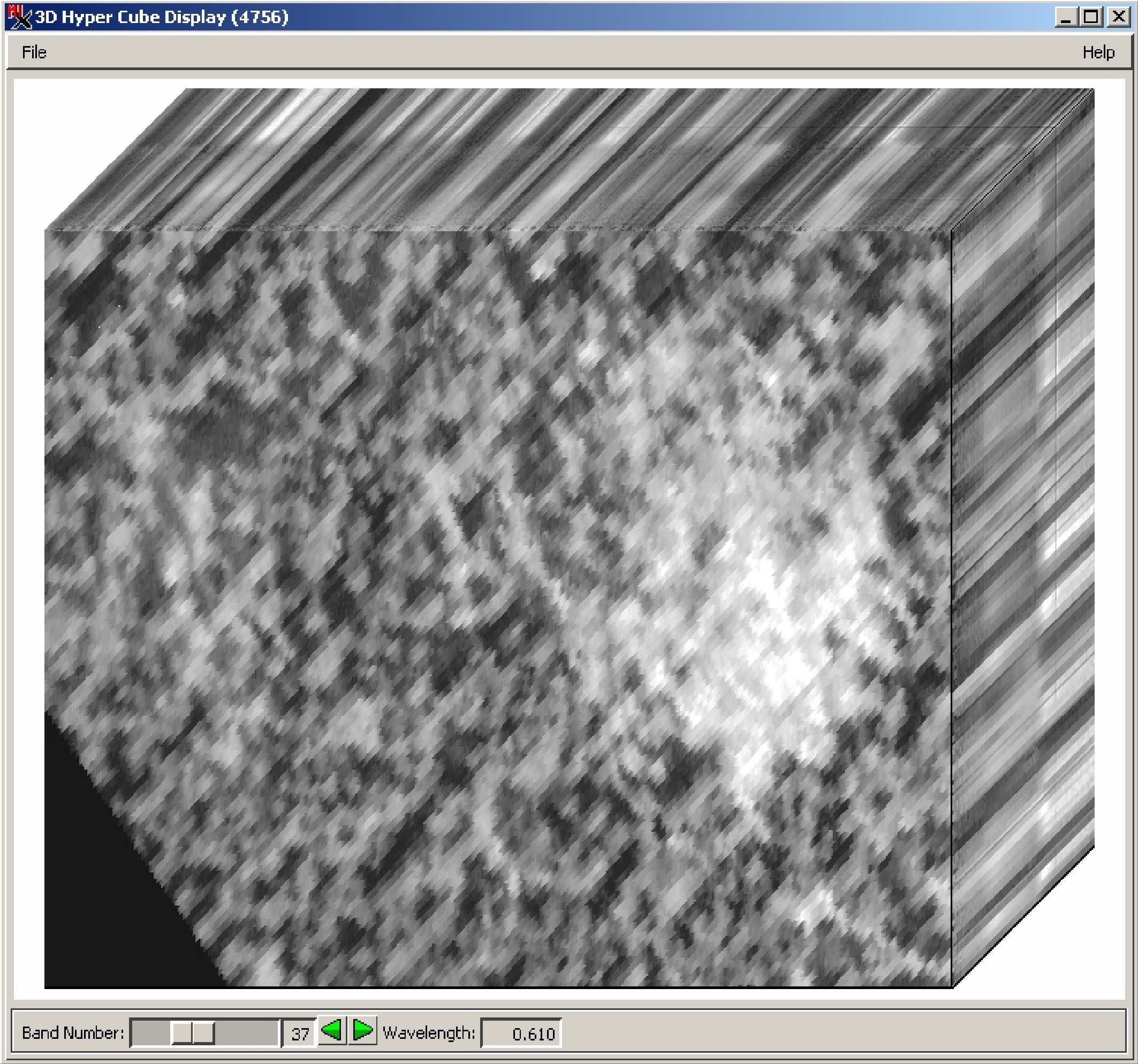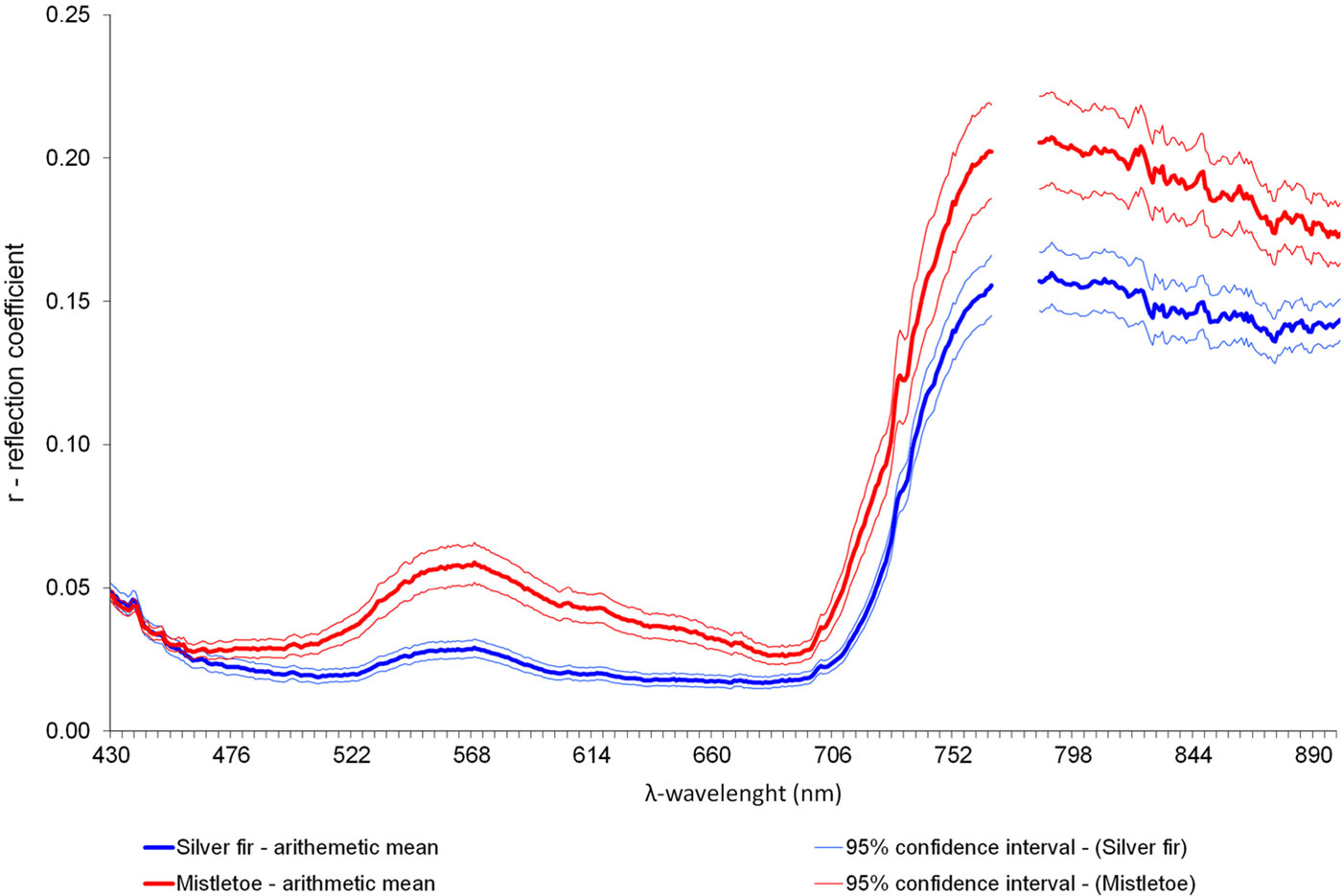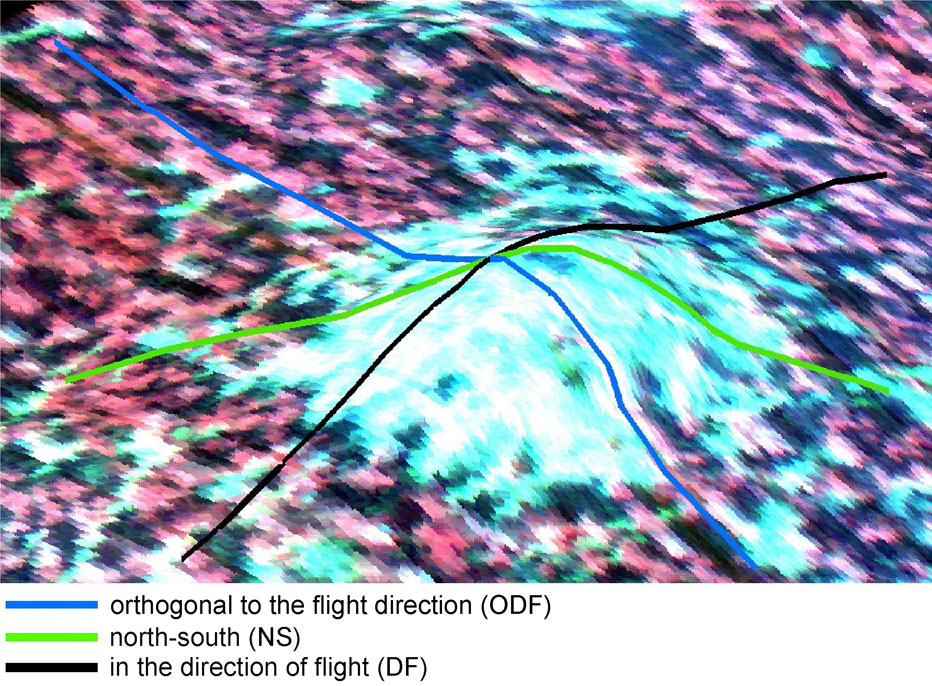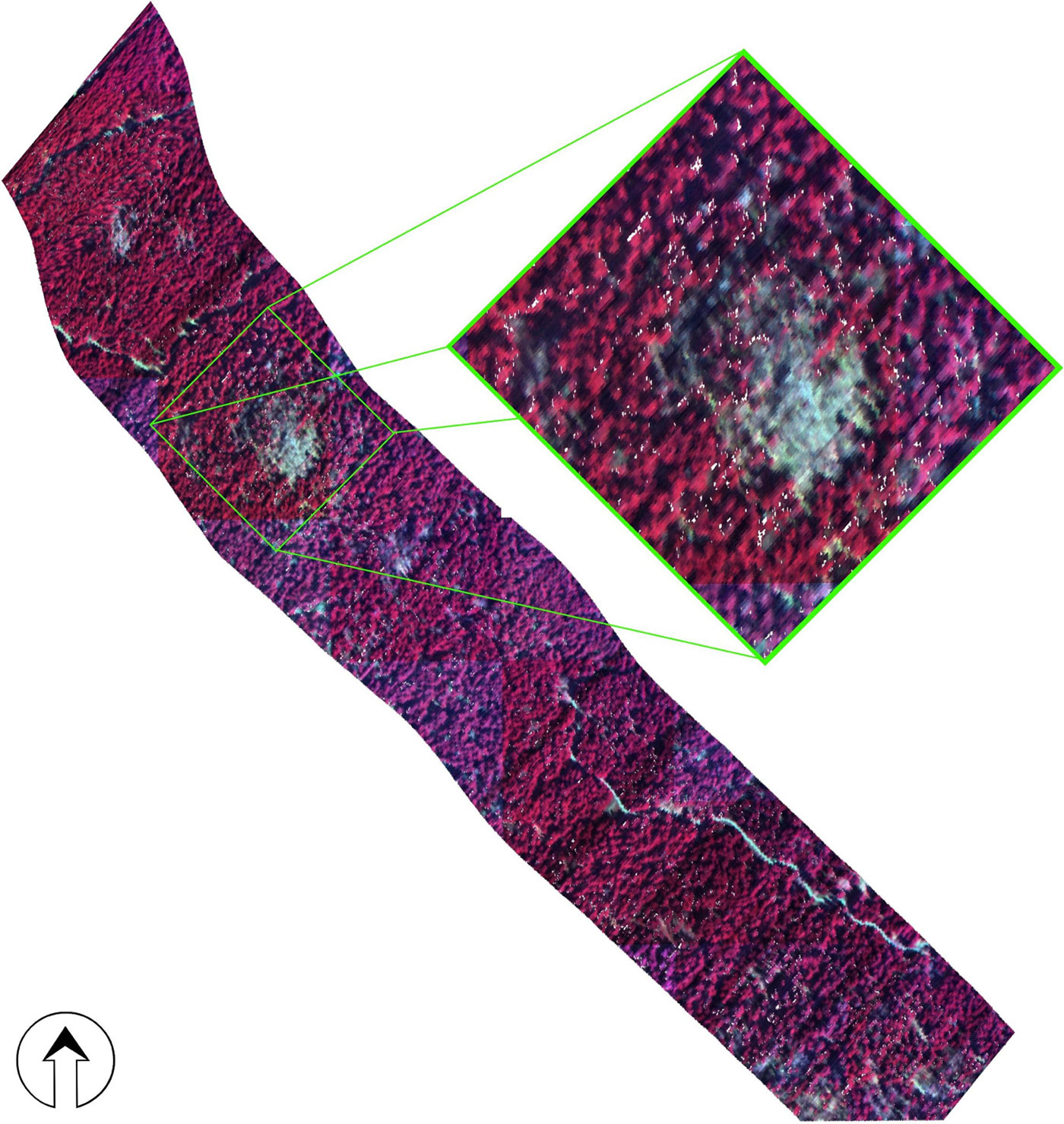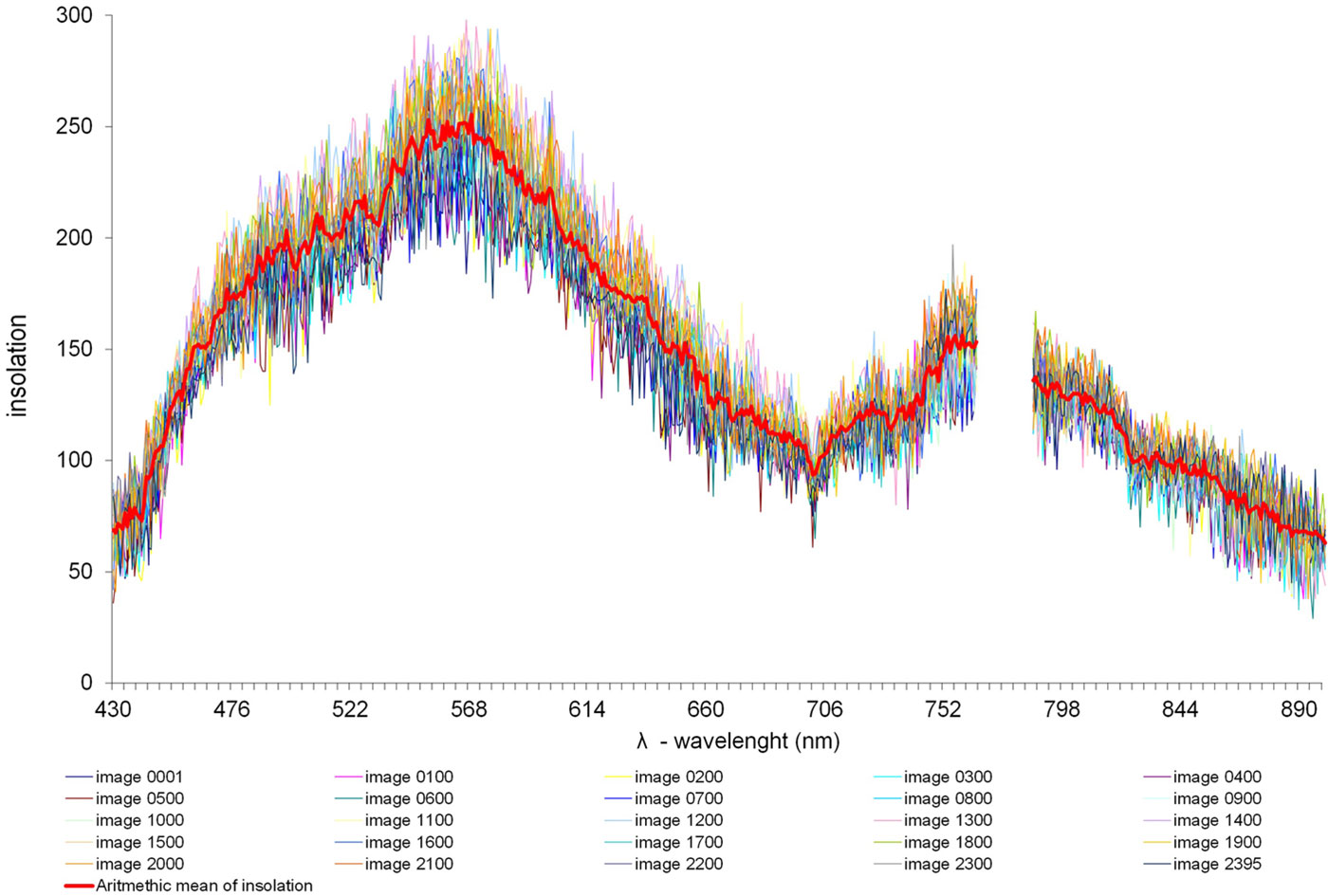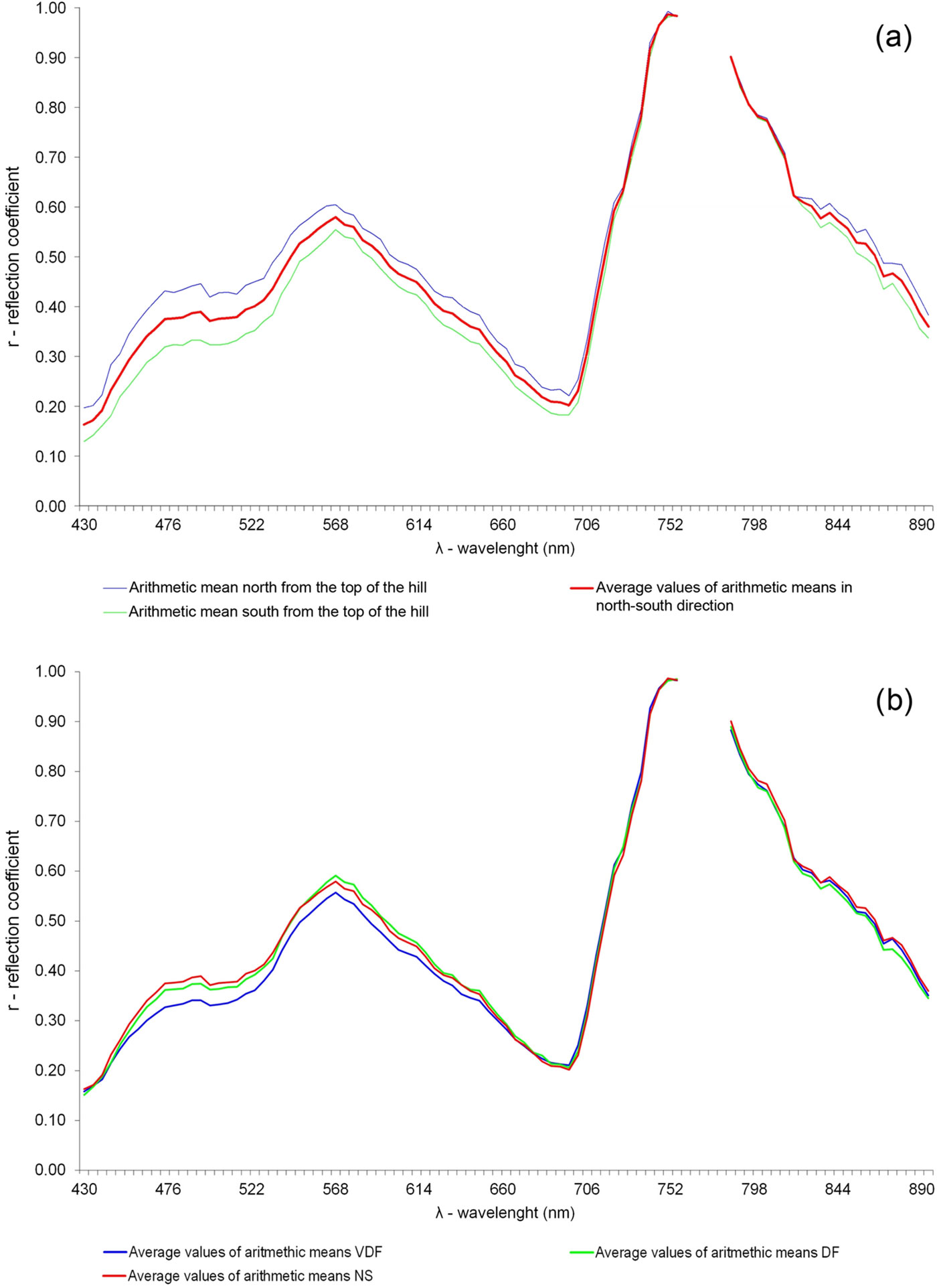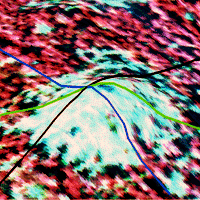
Detecting mistletoe infestation on Silver fir using hyperspectral images
iForest - Biogeosciences and Forestry, Volume 7, Issue 2, Pages 85-91 (2014)
doi: https://doi.org/10.3832/ifor1035-006
Published: Dec 18, 2013 - Copyright © 2014 SISEF
Technical Advances
Abstract
Silver fir is one of the most important commercial and ecological species in Croatia, and is currently the most damaged tree species in Croatian forests. It is increasingly being infested by white mistletoe, whose irrational consumption of water and nutrients contributes to physiological weakening of the tree. Mistletoe may indicate the presence of stress factors in the site and may even cause premature death. The increment of mistletoe-infested trees is lower compared to that of non-infested trees. Hence, these trees should have a cutting priority, while their timber still retains its commercial value. Areas of mistletoe-infested fir forests are expanding; therefore, there is a high correlation between silver fir forest damage and mistletoe distribution, with an almost exponential increase in mistletoe populations. The purpose of this research was to develop an efficient and reliable method of mistletoe detection. Surveying was performed in the mountain area of beech-fir forests, using a hyperspectral scanner. The Spectral Angle Mapper (SAM) classification for 5° proved to be the best classification method. The results were also confirmed by terrestrial validation, i.e. aerial surveying with a non-pilot aircraft from a height of ~30 m above the crowns. The results of this research do not differ significantly from the results obtained with standard ground methods. Limitations of standard ground methods further highlight the importance and efficiency of hyperspectral imagery in mistletoe detection. Furthermore, the first “spectral signatures” - endmembers for fir and mistletoe, were determined, and entered into a spectral library database. The results of this research are applicable primarily in the field of forest management, protection and harvesting, but they can also supply experts in other fields with a basis for explaining various observed phenomena. It outlines some of the possibilities of the application both in scientific and operative fields.
Keywords
Remote Sensing, Hyperspectral Images, Spectral Signatures, Mistletoe Detection, Health Status, Silver Fir
Introduction
The narrow ecological niche and the extensive exposure to pollution makes silver fir (Abies alba Mill.) a highly endangered species. It is currently the most damaged tree species in Croatian forests ([30], [29]). In addition to insects and fungi, fir is increasingly attacked by mistletoe (Viscum album L. ssp. abietis [Weisb.] Abrom), which physiologically weakens the tree by its remarkable consumption of water ([13], [21], [11]) and mineral nutrients ([41]), thus predisposing the host to pest and disease attacks. Mistletoe is also considered an indicator of existing stress ([2], [33], [22], [40]). It has been reported that an excessive number of shrubs may even cause tree death ([28], [5], [42], [6], [36], [24]). Morevover, mistletoe-infected trees have lower increment than uninfected trees ([19], [37], [38], [23], [4]) and should therefore have a cutting priority as long as their timber still retains its commercial value.
A high correlation between fir infestation and mistletoe distribution has been reported ([15], [18], [4]) with an almost exponential trend in the mistletoe population increase ([23]). An increase in the intensity of mistletoe infestation was also noted, favoring its spread to healthy trees ([16]). Tree health status can be determined in two ways: by ground and by remote sensing observations, of which color infrared (CIR) images are particularly important ([25], [26]). In Croatia, forest damage over large areas has been assessed by means of CIR aerial imagery since 1988, though mistletoe could not be detected based on these images. Preliminary pilot tests aimed at assessing fir damage using multispectral digital images have been carried out in 2004 ([27]), confirming that mistletoe could be successfully detected using a high-resolution multispectral digital camera. In contrast, standard field methods for mistletoe detection are generally based on visual survey (using binoculars) of edge trees along roads or in clearings, from which only the upper crown is visible ([17]), and therefore do not often reflect the real conditions in the field. For example, Diminić et al. ([10]) suggests that ground analyses of mistletoe presence in the crowns of standing trees are not fully reliable.
The limitations of standard field methods call for new approaches to assess tree health and quantify mistletoe infestation. The importance and efficiency of high-resolution multispectral and hyperspectral imagery for the goals mentioned above have been highlighted by Entcheva-Campbell et al. ([12]), Somers et al. ([34]) and Cho et al. ([7]). By recording a high number of narrow bands and increasing the spectral resolution, hyperspectral images make it possible to discern very narrow spectral features ([1], [32]). Hyperspectral research in Croatia was launched within the Croatian mine action center (CROMAC) programme focused on the reduction of mine-polluted areas in Croatia ([8], [3]). A line hyperspectral scanner provided the first reflectance curves of fir and mistletoe, which were used as entry parameters for further research ([26], [27]).
The aim of this research was to develop an efficient and reliable method of mistletoe detection over large areas using a hyperspectral scanner and supervised classification methods.
Materials and methods
Hyperspectral scanning was performed in two areas characterized by the presence of beech-fir forests in the Dinaric region of Croatia (Lipovlje: 44° 50’ N, 15° 11’ E; Ramljani: 44° 44’ N, 15° 23’ E). At the time of aerial survey (April), deciduous species had not yet burst into leaves. Data collected with a hyperspectral line scanner ImSpector V9 (spectral range 430-900 nm, spectral resolution 7 nm) mounted on an helicopter were recorded as individual lines, together with spatial data from the Position and Orientation System (POS). These data were used to conduct parametric geocoding and obtain a raw geocoded hyperspectral cube (Fig. 1). After formulating the real geocoded hyperspectral cube, an image similar to a color infrared was obtained by selecting the following bands: 94 (895 nm, the near infrared part of the spectrum); 54 (695 nm, the red part of the visible spectrum); 22 (535 nm, the green part of the visible spectrum). Hyperspectral scanning provided pure spectral samples (endmembers), and showed a difference between the spectral curves of fir and mistletoe. The spectral samples formed a part of the spectral booklet created by means of the TNTmips Free® Hyperspectral module. The booklet served as a basis for interpreting the data collected by aerial surveys over large areas. Samples according to three classes (vegetation, shadow, and rock) were taken from the whole area. These samples differ not only visually but also in terms of spectral curves. Based on the collected samples, the following supervised classifications were conducted: Feature Mapping, Hyperspectral analysis (Spectral Angle Mapper - SAM, Cross-correlation, Linear Unmixing, Fuzzy C means), as well as an unsupervised Fuzzy C means classification. Satisfactory results were obtained using SAM and Cross-correlation, of which the SAM method was the best (Fig. 2). The SAM algorithm is an easy and rapid method for mapping the similarity of image spectra to reference spectra. It is also a very powerful classification method because it holds back the influence of shading effects and enhances the target reflectance characteristics ([9], [14]). The reference spectra can either be taken from laboratory or field measurements or extracted directly from the image. SAM measures the spectral similarity by calculating the angle between the two spectra treating them as vectors in a n-dimensional space ([20], [39], [31], [14]). Small angles between the two spectra indicate high similarity, while large angles indicate low similarity. A supervised classification procedure was conducted for the selected areas in the vegetation class in order to delineate the spectral curves for fir and mistletoe. Pixels differing from their neighbors (surrounding pixels) based on the shape of their spectral curve were selected in the supervised classification process (Fig. 3). The spectral curve of the selected pixels followed the shape of the reference spectral curve for mistletoe obtained by scanning under controlled conditions (Fig. 4). The procedures of selecting the class of mistletoe and testing within the same class included the selection of the samples for SAM classification separately with 4°, 5° and 6° of threshold value (degrees were selected by testing). The arithmetic means were calculated separately for each threshold. As the degrees within the SAM classification increased, the number of the selected samples also increased, but a shift also occurred in the spectral curves of the selected mistletoe samples with 4°, 5° and 6° thresholds. The largest difference occurred in the near infrared part of the spectrum, which showed a downward tendency towards the fir spectrum, whereas the spectral curves in the visible and “Red Edge” part of the spectrum retained their shape and exhibited only very slight fluctuations. The selected curves of the arithmetic means for 4°, 5° and 6° SAM classifications were compared each other and with the spectral curves obtained for fir (Fig. 5). After the mistletoe samples were selected and SAM classifications performed, a SAM classification within the vegetation class was carried out using pure spectral samples (endmembers) for fir and mistletoe as reference. Comparison for all estimations was performed using a repeated measures analysis of variance (ANOVA) with α = 0.05 using the package SUAUJCUJDA 7.1® ([35]).
Fig. 2 - Result of the application of the SAM classification method with 7° threshold value for (a) vegetation, (b) rock and (c) shadows.
Fig. 4 - Mean values of spectral reflectance for silver fir and mistletoe over the wavelength range considered in this study.
Fig. 5 - Comparison of arithmetic mean values of reflectance for mistletoe (using SAM classification with threshold 4°, 5° and 6°) with mean values obtained for silver fir (green line).
The SAM classification procedure with threshold value 5°, which proved to be optimal, was performed over all the image segments. In order to test for any major changes in solar irradiation during hyperspectral scanning data collection, mean values of insolation were calculated based on data recorded by FODIS. Spectral ranges where large portions of electromagnetic radiation are absorbed by the atmosphere (atmospheric maxima) were excluded from data processing to avoid spurious results in the spectrum values.
Moreover, in order to verify the impact of the relief on vegetation classification results, a digital elevation model was constructed. Three directions (north-south - NS, the flight direction - DF, and orthogonal to the flight direction - ODF) were considered (Fig. 6), each including two sub-categories (before hill and after hill). Results were verified by aerial recording with an unmanned aircraft (hexacopter), for which all flight parameters were recorded (position, height, direction, speed, etc). Survey was performed at several flight altitudes above the crowns (~30 m, ~50 m, ~70 m).
Results and discussion
Of the applied methods of supervised (Cross correlation, SAM, Fuzzy C means, Feature Mapping) and unsupervised (Auto-classify) classifications, satisfactory results were obtained using both Cross correlation and SAM methods, though the latter proved to be the best. Based on the mistletoe samples identified using SAM classification, it was possible to detect and select mistletoe bushes within the fir crown. However, a high variability was observed in the data collected, as reflected in the misclassification of a part of the overlaying selected pixels as fir classes obtained by automatic classification methods. This could be due to the partially overlapping spectral curves obtained for fir, not clearly differentiated as the spectral curve for mistletoe.
Using the SAM method with 4°, 5° and 6° threshold values in the selected samples within the mistletoe class, mean values of spectral curves for the mistletoe were obtained, clearly distinct from the fir spectrum for all the tested degrees. By increasing the degree, a partial overlap of the near infrared part of the spectrum was observed in the reflectance curves for mistletoe and silver fir. This implies that for threshold degrees higher than 6° fir would be discerned instead of mistletoe (Fig. 5).
The final outcome of the investigation carried out was the identification of the spatial distribution of mistletoe-infected silver fir trees over the whole studied area (Fig. 7). The results of testing the effects of insolation on classification outcomes are presented graphically in Fig. 8, after subtraction of maximum absorbance values. As expected, insolation varied during scanning, though no abrupt leaps or large fluctuations were observed around the central values. Therefore, we concluded that insolation did not affect the classification obtained.
Fig. 7 - Results of the SAM classification using endmembers (pure spectral samples) as reference for mistletoe (white pixels).
Fig. 8 - Graphic representation of measured insolation (solar irradiation) values and its arithmetic mean (red line) across the analyzed spectral range (430-809 nm).
The impact of the relief on the classification obtained was assessed by comparing reflectance values measured in the different directions (NS, DF, ODF - see Fig. 6). The largest deviation was found for the NS direction in the visible part of the spectrum, up to the “Red Edge” area (430-700 nm), and again from the center of the near infrared area to the end of the spectrum (835-900 nm). In the visible part of the spectrum, differentiation in the blue (455-475 nm), cyan (476-495 nm) and green (496-535 nm) are particularly conspicuous (Fig. 9a). Comparison of values for the three measuring directions showed that NS- and DF-curves did fairly overlap, while the ODF spectral curve diverged in the visible part of the spectrum over the range 455-650 nm (Fig. 9b).
Fig. 9 - Comparison among arithmetic means and their mean values in NS direction (a) and comparison of arithmetic means by measuring directions (b).
Finally, data collected from the flight with the unmanned aerial vehicle at ~30 m fully supported the spatial distribution of mistletoe-infected silver fir trees drawn by the SAM classification with 5° threshold value, therefore confirming that a clear identification of mistletoe bushes in fir crowns using hyperspectral images is precisely feasible (Fig. 10). Accordingly, we recommend the use of hyperspectral images and the SAM classification (threshold: 5°) as a reliable method for mistletoe detection on fir.
Fig. 10 - Aerial photograph of the recording site taken at an altitude of approx. 30 m. Red circles indicate the position of mistletoe bushes on the silver fir crowns.
Future research are needed to corroborate the approach used here and to extend its validity to other site/ecosystems. However, the method applied has several advantages over the standard field methods, that imply felling a large numbers of trees and expensive field work ([10]). Hyperspectral image analysis allows a rapid and economic detection of mistletoe over large areas. Moreover, early detection of infestation hotbeds is fundamental in both commercial forest harvesting (reducing losses in roundwood value caused by mistletoe infestation) and forest protection.
Conclusions
An assessment of mistletoe infection on silver fir was conducted in two beech-fir forests in the Dinaric region of Croatia by the use of hyperspectral images and supervised classification methods. The following conclusions were made:
- Mistletoe attacks can be successfully detected by hyperspectral images. The best classification method for detection was Spectral Angle Mapper (SAM) classification with 5° threshold value.
- Limitations of standard field methods currently in use call for new approaches based on remote-sensed hyperspectral images to assess fir damage and detect mistletoe.
- The methods used here may allow a cost-effective mapping of the distribution and intensity of mistletoe infection in silver fir, and can be considered an helpful tool for forest management and planning, forest protection and harvesting.
References
Gscholar
Gscholar
Gscholar
CrossRef | Gscholar
Gscholar
Gscholar
Gscholar
Gscholar
Online | Gscholar
Gscholar
Gscholar
Gscholar
Gscholar
Gscholar
Gscholar
Gscholar
Gscholar
Gscholar
Gscholar
CrossRef | Gscholar
Gscholar
Gscholar
Gscholar
Authors’ Info
Authors’ Affiliation
Renata Pernar
Ante Seletković
Jelena Kolić
Faculty of Forestry University of Zagreb, Svetošimunska cesta 25, 10000 Zagreb (Croatia)
Faculty of Geodesy University of Zagreb, Kačićeva 26, 10000 Zagreb (Croatia)
Corresponding author
Paper Info
Citation
Ančić M, Pernar R, Bajić M, Seletković A, Kolić J (2014). Detecting mistletoe infestation on Silver fir using hyperspectral images. iForest 7: 85-91. - doi: 10.3832/ifor1035-006
Academic Editor
Alberto Santini
Paper history
Received: May 07, 2013
Accepted: Oct 31, 2013
First online: Dec 18, 2013
Publication Date: Apr 02, 2014
Publication Time: 1.60 months
Copyright Information
© SISEF - The Italian Society of Silviculture and Forest Ecology 2014
Open Access
This article is distributed under the terms of the Creative Commons Attribution-Non Commercial 4.0 International (https://creativecommons.org/licenses/by-nc/4.0/), which permits unrestricted use, distribution, and reproduction in any medium, provided you give appropriate credit to the original author(s) and the source, provide a link to the Creative Commons license, and indicate if changes were made.
Web Metrics
Breakdown by View Type
Article Usage
Total Article Views: 55489
(from publication date up to now)
Breakdown by View Type
HTML Page Views: 46202
Abstract Page Views: 3129
PDF Downloads: 4539
Citation/Reference Downloads: 24
XML Downloads: 1595
Web Metrics
Days since publication: 4334
Overall contacts: 55489
Avg. contacts per week: 89.62
Article Citations
Article citations are based on data periodically collected from the Clarivate Web of Science web site
(last update: Mar 2025)
Total number of cites (since 2014): 3
Average cites per year: 0.23
Publication Metrics
by Dimensions ©
Articles citing this article
List of the papers citing this article based on CrossRef Cited-by.
Related Contents
iForest Similar Articles
Review Papers
Accuracy of determining specific parameters of the urban forest using remote sensing
vol. 12, pp. 498-510 (online: 02 December 2019)
Review Papers
Remote sensing-supported vegetation parameters for regional climate models: a brief review
vol. 3, pp. 98-101 (online: 15 July 2010)
Review Papers
Remote sensing of selective logging in tropical forests: current state and future directions
vol. 13, pp. 286-300 (online: 10 July 2020)
Technical Reports
Detecting tree water deficit by very low altitude remote sensing
vol. 10, pp. 215-219 (online: 11 February 2017)
Research Articles
Afforestation monitoring through automatic analysis of 36-years Landsat Best Available Composites
vol. 15, pp. 220-228 (online: 12 July 2022)
Research Articles
Assessing water quality by remote sensing in small lakes: the case study of Monticchio lakes in southern Italy
vol. 2, pp. 154-161 (online: 30 July 2009)
Review Papers
Remote sensing support for post fire forest management
vol. 1, pp. 6-12 (online: 28 February 2008)
Research Articles
Modelling dasometric attributes of mixed and uneven-aged forests using Landsat-8 OLI spectral data in the Sierra Madre Occidental, Mexico
vol. 10, pp. 288-295 (online: 11 February 2017)
Technical Reports
Remote sensing of american maple in alluvial forests: a case study in an island complex of the Loire valley (France)
vol. 13, pp. 409-416 (online: 16 September 2020)
Research Articles
Mapping the vegetation and spatial dynamics of Sinharaja tropical rain forest incorporating NASA’s GEDI spaceborne LiDAR data and multispectral satellite images
vol. 18, pp. 45-53 (online: 01 April 2025)
iForest Database Search
Search By Author
Search By Keyword
Google Scholar Search
Citing Articles
Search By Author
Search By Keywords
PubMed Search
Search By Author
Search By Keyword

